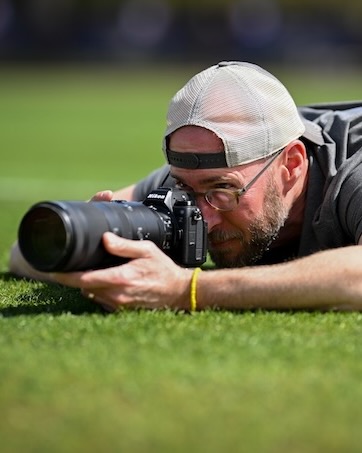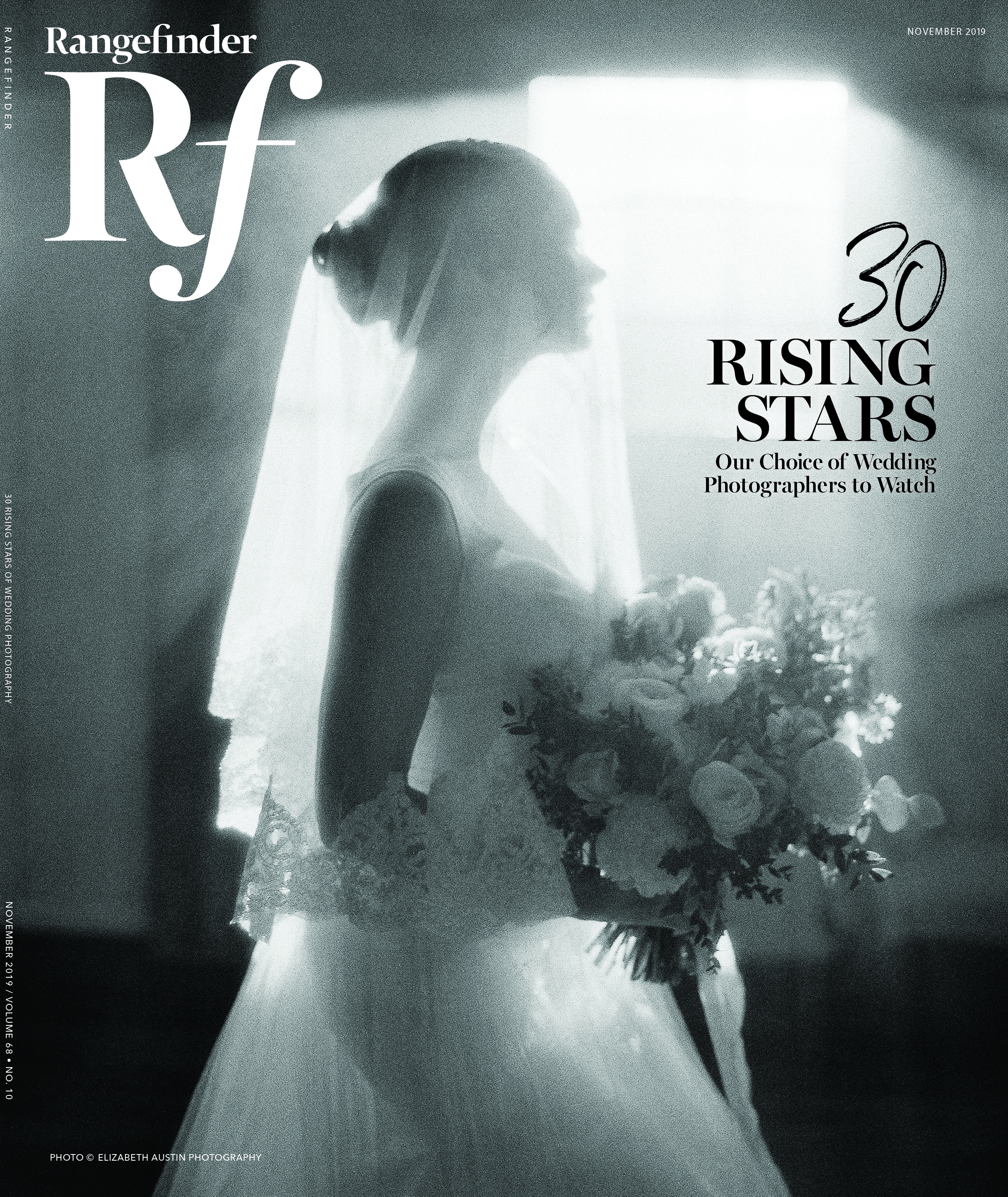Cameras
Rangefinder is a member of the Technical Image Press Association, which has contracted with Image Engineering for detailed lab tests of cameras. Recently they put the Sigma fp L under the proverbial microscope and we’ve distilled the results.
Sigma’s foray into full-frame mirrorless cameras began at Photokina 2018, where it announced its participation in the L-Mount alliance and sketched out an ambitious plan for new cameras and lenses to support the L-Mount. This year a follow-up to the original fp full-frame mirrorless was released, the Sigma fp L, hailed it as the world’s “smallest and lightest” 61-megapixel full-frame camera.

Unlike earlier Sigma cameras, the fp L doesn’t use the company’s unique Foveon sensor technology but a conventional Bayer image sensor. This generous helping of resolution enables a “crop zoom” mode—basically a digital zoom—that can deliver a 5x digital crop during filmmaking that still retains enough resolution for a full HD clip.
[Read: Sigma’s 35mm f/1.4 DG DN Art Redesigned for Mirrorless]
The camera’s autofocusing system employs both phase and contrast detection. There are 49 autofocusing points, plus face/eye detection and tracking. Somewhat uniquely, there’s no mechanical shutter on the camera, just an electronic one.
For filmmaking, the camera can capture CinemaDNG files at 8-,10- and 12-bit color depth. It supports USB charging while the camera is on and can double as a webcam. Like the original fp, the fp L has two user interfaces—one for still shooting, the other for filmmaking. You can save camera settings and load them onto other fp Ls, the better for multi-camera shoots.
The Sigma fp L: Plenty of Pixels But What About the Resolving Power?
In lab tests, it’s not unusual for very high-resolution cameras to show lower resolving power as a percentage of their sensor’s theoretical maximum resolution than cameras with lower megapixel sensors. And so it is with the Sigma fp L, which could resolve 81 percent of its sensor’s theoretical maximum at ISO 100. That places the fp L behind other high-res full frames, like the 50-megapixel Sony A1 (96 percent) or the 61-megapixel a7R Mark IV (94 percent) and the 47-megapixel Panasonic’s S1R (96 percent).
[Read: Sigma’s Super-Telephoto 150-600mm f/5-6.3 for Mirrorless]
While it’s not at the top of the pile, the Sigma fp L retains a fair amount of resolving power as you increase ISO. At ISO 400, it’s still resolving 81 percent of its sensor’s theoretical maximum. At ISO 800, 79 percent and 77 percent at ISO 1600. While they boast greater resolving power, both the Sony a7R IV and A1 lose it faster than the Sigma as you increase ISO.
Image Engineering noted that detail capture was “very good” at the lowest ISO but just “decent” by the time you reach the middle ISO values. Sharpening was at its strongest at ISO 100.
Visual Noise: Well-Controlled in Prints
The fp L does an excellent job controlling noise in post-card-sized prints. There was no visible noise to be found at any ISO level at this viewing condition. For larger prints, noise doesn’t become visible until ISO 12,800—a very good result. Switch to the more demanding viewing condition of a digital file enlarged to 100 percent, however, and the fp L is showing some visual noise at base ISO. By ISO 6400, noise in this viewing condition is “obvious.”
The other 61-megapixel camera on the market, Sony’s A7R IV, fared slightly better. There was no visible noise on a digital enlargement at base ISO, but there’s barely visible noise by ISO 400. By the time you’re at ISO 3200 in this viewing condition, noise was deemed “disturbing.”
How does the fp L compare to other high-res competitors? Sony’s A1 barely contained visible noise in a 100 percent enlargement at ISO 1600 and showed zero noise at any ISO level when viewing its output as a small or large print. Panasonic’s S1R showed noticeable to “somewhat disruptive” noise at lower ISOs (through ISO 1600) and “very obvious” noise at ISO 6400 when viewing a 100 percent enlargement on a digital display. Switch to prints, and the S1R keeps noise at bay until around ISO 6400.
Dynamic Range Strong But Color Reproduction, Not So Much
At ISO 100, the Sigma fp L delivers 10.3 stops of dynamic range. That’s better than Panasonic’s S1R (9.4 stops) and Sony’s a7R IV (10.2 stops) , but not quite as good as the 10.5 stops produced by the Sony A1.
By ISO 1600, the Sigma fp L slips to 9.2 stops of dynamic range.
Color reproduction, on the other hand, doesn’t appear to be the camera’s strong suit. Fifteen colors were found to deviate strongly from the reference target, compared to seven for the A1, six for the S1R and just three for the a7R IV. However, automatic white balance performed well and consistently at all but the highest ISO level tested.


Sigma’s fp L Video Performance is Impressive
Sigma has made a serious effort to court filmmakers with its fp series and the fp L is no exception. In fact, ithe camera performed better in tests of its video quality than its stills.
In resolution tests measuring a still image extracted from 4K video, the fp L performed better in video than still photography, resolving 89 percent of its sensor’s theoretical maximum at ISO 100. Bump the ISO to 1600 and resolving power drops to 83 percent—still higher than the results achieved in still image mode. That’s not as strong as the performance of Sony’s a7R IV, which can resolve 108 percent of its sensor’s theoretical maximum at ISO 100. Panasonic’s S1R is also a bit stronger, resolving 90 percent of its sensor’s theoretical maximum at base ISO.
Texture reproduction was found to be “excellent” at both ISO 100 and 1600. The camera applies a milder sharpening effect during video, too. And noise? Image Engineering found none at either ISO 100 or 1600 when viewed at 100 percent.
One area where video trailed still photo performance was dynamic range, where the fp L delivered over 9 stops, but not the 10 you can achieve in still photo mode. In terms of its high-res competition, both the Sony A1 and a7R IV are delivering 10 stops of dynamic range at lower ISOs.
The Sigma’s color reproduction in video was about the same as in still photo mode, which is to say, not great. White balance, however, was excellent.
Sluggish Start Up, Speedy Shot to Shot
The Sigma fp L starts up at a stately 2.2 seconds—slower than most of its aforementioned competitors.
[Read: Sony A1Review: A Furiously Fast Frame]
While it’s a bit slow out of the gate, the Sigma fp L does deliver a fairly brisk burst mode for a camera packing as many pixels as it does. It only has an electronic shutter and is capable of bursting at 10.1 JPEG frames per second (fps) or 10 fps in RAW until the memory card is full. That’s slower than Sony’s A1, but to be fair, every camera is slower than Sony’s speed demon. Compared to the Panasonic S1R and the Sony a7R IV, the Sigma is both a bit faster and capable of storing more images to memory, especially when shooting RAW images.
Interestingly, the autofocus performance on the fp L was found to be equally fast in bright light (300lx) and dimmer conditions (30lx). Typically, you can expect slightly faster performance in brighter environments. From the minute you press the shutter to the moment of autofocusing and image recording, the fp L was clocked at half of a second. Again, it’s not faster than the A1, but it’s on par with its other high-res rivals.
Price: $2,499
sigmaphoto.com





